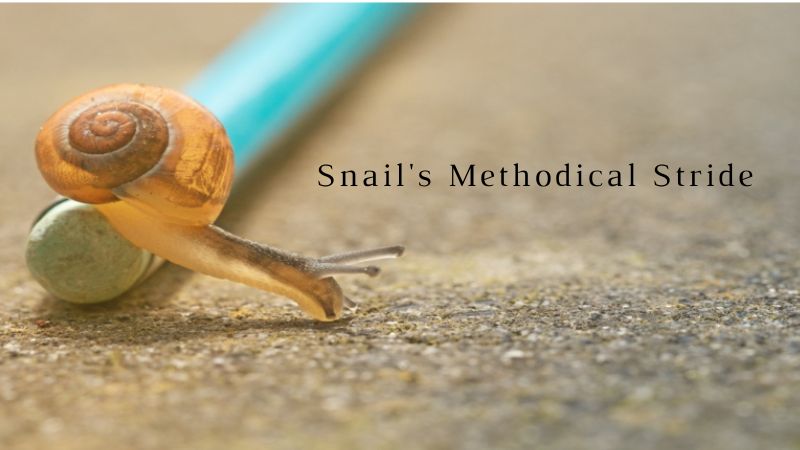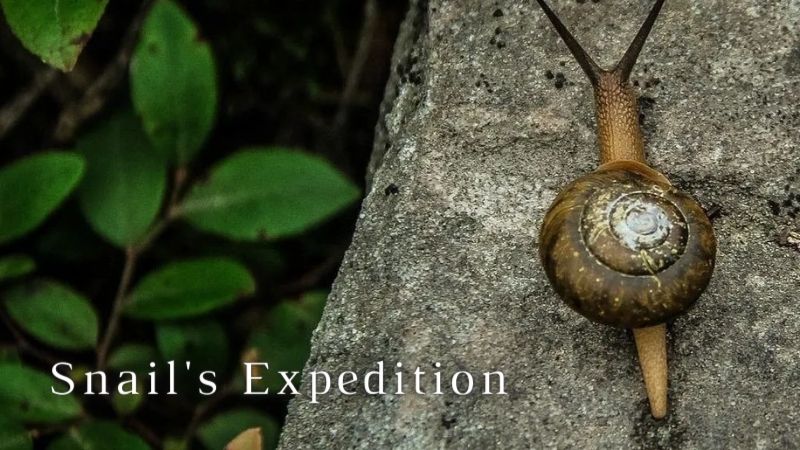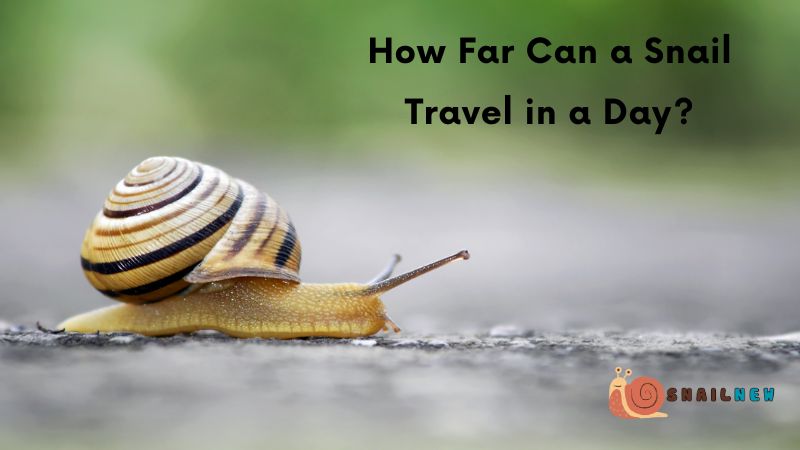In the realm of nature’s unhurried symphony, the snail stands as a testament to the art of patient progression. Its methodical pace, guided by an innate rhythm, paints a picture of resilience amidst the chaotic flux of existence. Amidst this serene backdrop, one question emerges as a beacon of curiosity: How far can a snail travel in a day? Get started with Snailnew now.
Table of Contents
ToggleUnderstanding the Snail’s Methodical Stride:
Before unraveling the dimensions of a snail’s daily journey, one must acquaint oneself with the intricacies of its locomotion. The snail’s journey is orchestrated by the rhythmic pulsations of its muscular foot, which, in tandem with the secretion of mucus, propels it forward in a graceful glide. This deliberate choreography, though seemingly sluggish to the untrained eye, is a testament to the finesse of nature’s design.

How Far Can a Snail Travel in a Day in the Garden Snail’s Expedition:
Among the myriad tapestries of gastropod life, the garden snail, scientifically known as Helix aspersa, emerges as a prominent figure. Adorned with its spiraled abode, this gastropod navigates the verdant landscapes of gardens and woodlands with a measured stride. But within the confines of its daily pilgrimage, how far can a snail travel in a day in the garden?

Scientific inquiry into the matter reveals a nuanced understanding of the garden snail’s journey. At its leisurely pace, akin to the cadence of a serene sonnet, the garden snail traverses the terrain at approximately 0.013 kilometers per hour. This equates to a modest daily distance of roughly 0.3 kilometers, a testament to the unhurried nature of its existence. However, within this seemingly constrained realm, lies a labyrinth of influences that shape the extent of its daily odyssey.
Environmental Variables: Navigating the Tapestry of Habitat
The canvas upon which a snail paints its daily trajectory is woven with threads of environmental influence. Temperature, humidity, and substrate composition intertwine to sculpt the contours of its journey.
Optimal conditions, characterized by moderate temperatures and a delicate balance of moisture, serve as catalysts for the garden snail’s expedition. In such idyllic settings, the snail’s propensity to venture forth is heightened, propelling it towards distant horizons with newfound vigor. Conversely, extremes in weather, be it scorching heat or chilling cold, act as deterrents, urging the snail to seek refuge within the sanctum of its shell.
The terrain over which the snail glides also holds sway over its progress. Smooth surfaces, akin to a silken canvas, facilitate effortless traversal, allowing the snail to extend its reach with minimal resistance. Conversely, rugged landscapes laden with obstacles impede its advance, necessitating a recalibration of pace and strategy.

Behavioral Dynamics: The Symphony of Instincts
Beyond the palpable influences of the environment, the snail’s journey is choreographed by the subtle nuances of its behavior. Diurnal rhythms, feeding patterns, and reproductive imperatives intersect to orchestrate a dance of movement and repose.
Though primarily nocturnal in nature, the garden snail’s activity spans the diurnal spectrum, punctuated by bouts of foraging and rest. The ebb and flow of food availability, often heralded by the gentle caress of rainfall, serve as harbingers of extended excursions into the nocturnal realm. In the pursuit of sustenance, the snail extends its reach, unfurling its sensory antennae to trace the scent trails of nourishment.
Yet, amidst the abundance of food, lurks the specter of predation, a perpetual reminder of nature’s unforgiving embrace. The garden snail, attuned to the whispers of danger, navigates the labyrinth of foliage with cautious precision, ever vigilant against the encroaching shadows of predators.
Reproductive imperatives also exert a profound influence on the snail’s journey. During the zenith of mating season, the snail embarks upon an odyssey of procreation, traversing vast expanses in search of compatible mates. This primal urge, woven into the fabric of its being, compels the snail to transcend the confines of its shelter, embracing the unknown in the pursuit of genetic perpetuation.
Adaptations and Constraints:
Navigating the Boundaries of Existence Amidst the tapestry of adaptation and resilience, the garden snail confronts inherent limitations that delineate the boundaries of its existence. A reliance on moisture to prevent desiccation confines its habitat to locales where humidity reigns supreme, relegating it to the shaded alcoves of arboreal havens and dew-laden meadows.
Furthermore, the omnipresent specter of predation imposes a constant state of vigilance, shaping the contours of the snail’s journey. From avian predators to voracious beetles, the gauntlet of threats underscores the delicate balance between movement and survival in the realm of gastropod existence.
Conclusion:
In the symphony of nature’s marvels, the snail emerges as a silent protagonist, weaving its narrative amidst the ebb and flow of existence. Though its journey unfolds at a pace seemingly antithetical to the frenetic rhythms of life, it embodies a profound testament to the resilience of the natural world.
So, how far can a snail travel in a day? Within the glistening trails left behind, we find echoes of a journey both humble and sublime, a testament to the boundless spirit of perseverance that animates the heart of all living things.


